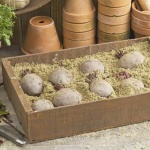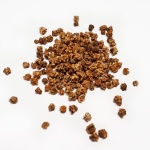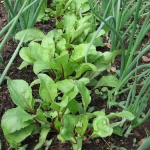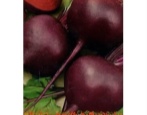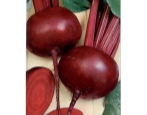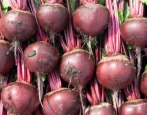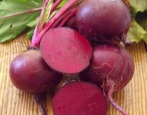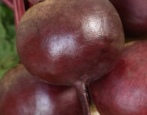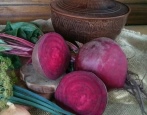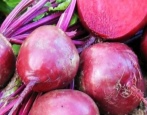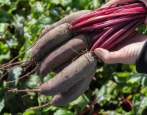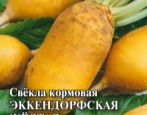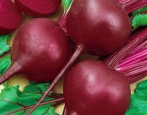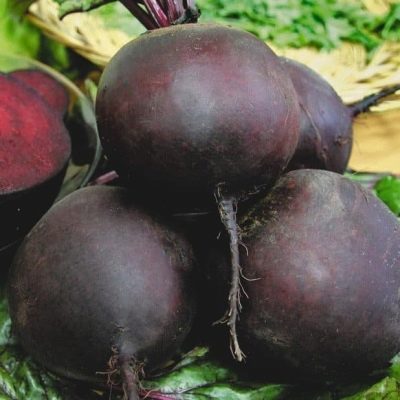
- Authors: Maksimov S.V., Klimenko N.N.
- Name synonyms: Smuglyanka
- Year of approval: 2007
- Leaf rosette shape: semi-upright
- Leaves: oval, green, medium bubbly, strong waviness of the edge
- Petiole: bottom side red
- The form: flat-round
- Weight, g: 240-380
- Cork head: the average
- Pulp color : red
Smuglyanka beet is a fruitful variety that attracts gardeners with strong immunity and unpretentious care. It is worth considering in more detail the key characteristics of the culture and the features of its cultivation.
Description of the variety
Smuglyanka beet is a standard beet variety that grows mainly in illuminated areas and forms large root crops with proper care. Among the characteristics of the plant, a developed root system and large fruits are distinguished.
The variety easily tolerates temperature extremes, which makes it in demand among gardeners.
Characteristics of the appearance of the plant and root crops
Dark brown is considered one of the most common beetroot varieties with its characteristic sweet and tasty fruits. Its rosette is semi-erect, and the foliage is oval, green, medium bubbly.
Fruit characteristics:
- weight - up to 380 g;
- length - 15-16 cm;
- shape - flat-round.
The skin of the beetroot is quite dense and has an unusual red hue. The pulp is a little lighter, pink tones are present in its color.
Purpose and taste of tubers
Tasters appreciate the taste properties of Smuglyanka beets. Root vegetables have a rich sweetish and delicate taste, suitable for fresh consumption, as well as for preparing various dishes, preserving and other operations.
Maturation
On average, the variety forms roots in 95-115 days. This period is enough to start harvesting.
Yield
The indicator reaches 5-6 kg per square meter of the garden or 28-52 tons per hectare, which makes beets in demand for agronomists who want to organize the production of root crops on an industrial scale.
Growing regions
Today, Smuglyanka beets are grown mainly in the Central and Central Black Earth regions. But gardeners from other areas can also cultivate it.
Growing and care
Beets are grown by seeds, but in the northern regions, seedlings are first germinated, which are then transplanted into open ground. The main work is carried out in the middle or late spring, and somewhere in the beginning of summer.
First of all, it is worth preparing the seeds. To do this, you will need them:
- take, removing deformed or diseased samples;
- disinfect with a weakly concentrated solution of potassium permanganate;
- treat with growth stimulants to accelerate seedling.
In parallel with the preparation of seeds, fertilization and loosening of the area where the material will be planted are carried out. When all the work is completed, it remains to plant the seeds in accordance with the 30x10 cm scheme.
You do not need to cover the seeds with transparent material. It is only necessary to sprinkle them with soil and water abundantly. After that, you will need to take care of the care of the crop in order to obtain high yields. The main points to consider are as follows.
- Watering. Beets require watering 1-2 times a week. In this case, it is worth using slightly salted water, and also adding a small amount. In case of drought, watering should be increased.
- Top dressing.Fertilizers are applied to the soil 3-4 times per season on average. Most of the dressings are used during the period of active growth and formation of root crops by the variety.
- Soil care. The beet plantation must be loosened and weeded regularly.
It is not recommended to plant beets in heavy soil, otherwise the plant will not take root and die without yielding a crop. The best predecessors for the variety are potatoes, pumpkin, onions, and even zucchini. If earlier the listed crops grew on the site where beet planting is planned, this is very good.
You can start harvesting in the first half of September, and all work will be completed by the end of the month.
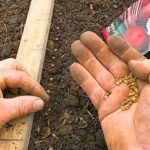
Beetroot tolerates cold snaps, therefore it is widely grown in the open field. When planting beets, you need to correctly determine the sowing time, choose a suitable place, prepare the beds, and do pre-sowing seed treatment.
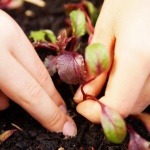
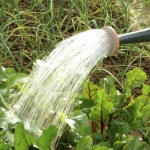
Soil requirements
The dark-haired woman is recommended to be planted in fertile and light soils with a neutral acidity index. Additional conditions:
- sunny area;
- lack of drafts;
- low groundwater level.
If the place for planting beets is in a lowland, where moisture often accumulates after melting snow or rains, it is worth taking care of a drainage system.
Required climatic conditions
Planting beets in open ground should be done in warm and sunny weather. It is important that the air temperature warms up to at least 15 degrees Celsius, and the ground warms up to 8-10 degrees. These are the optimal conditions under which the beets will quickly start growing and begin to form root crops.
Disease and pest resistance
The dark-haired woman has a rather strong immunity, she is not afraid of most pests and diseases, coping well with their attacks. However, with improper care, the plant's immunity falls, which leads to the development of:
- rot;
- fungus;
- powdery mildew.
Pre-treatment of seeds and tops with special compounds will help prevent such an outcome. Before use, it is recommended to carefully study the composition of the drugs used.

